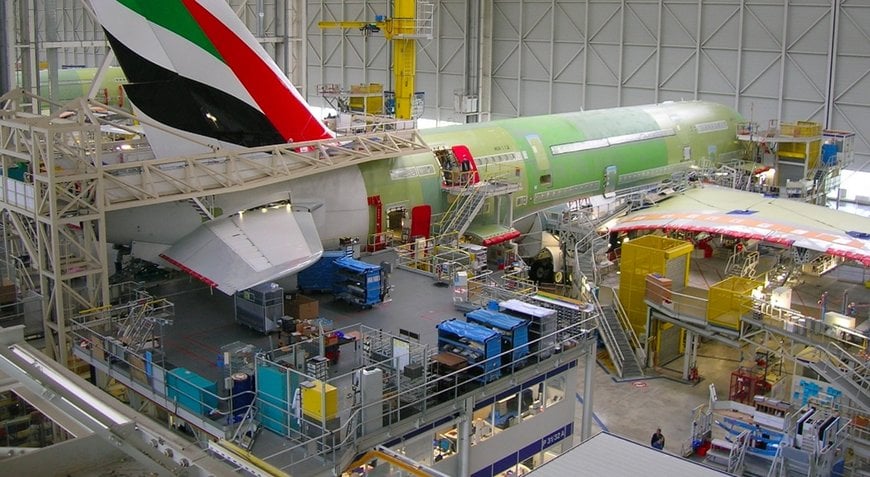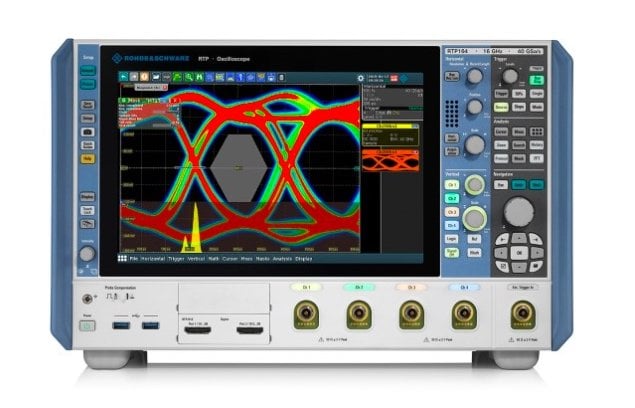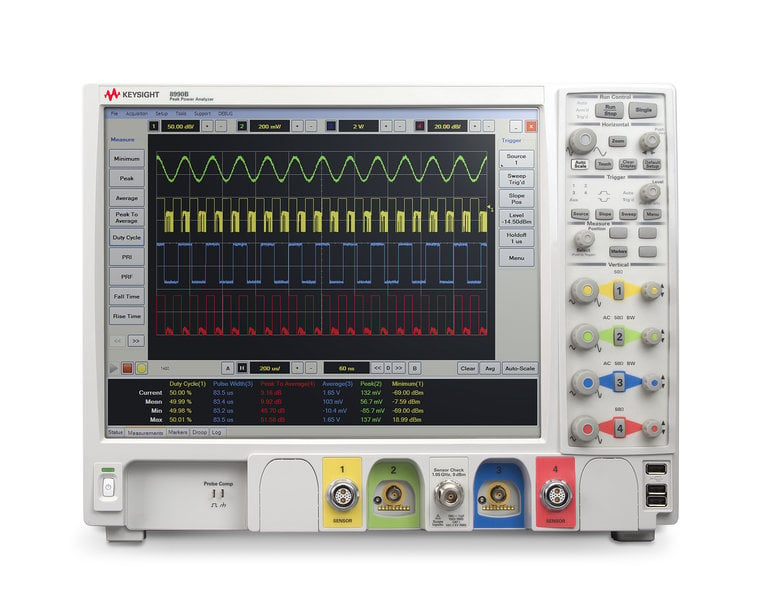www.industryemea.com
06
'22
Written on Modified on
Getting the measure of test equipment investment strategies in the aerospace sector
By Peter Spillman, Global Vice President of Product Strategy, Electro Rent.

As the aerospace industry returns to full health following a period of low activity, several sector-specific challenges are encouraging a growing number of OEMs and supply manufacturers to adopt a different approach in specifying their test and measurement equipment. Taking advantage of rental and other financial solutions is providing a highly cost-effective, flexible and low-risk way to overcome the constraints and expense associated with acquiring test equipment, not to mention other undesirable factors such as equipment depreciation and obsolescence.
Companies operating in the aerospace sector need to keep on pushing the performance envelope, while also providing the reliability levels expected in mission-critical applications. Comprehensive testing is therefore essential, so getting the approach right is paramount. However, implementing any new test equipment investment strategy must take place against a rapidly evolving industry backdrop.
Growth and opportunities
Looking ahead over the next few years, the global aerospace testing arena is expected to bounce back strongly, at least according to market research consultancy Lucintel, which predicts that the market will reach annual revenues of $5.3 billion by 2025. The demand for military aircraft, for example, is currently buoyant. Among numerous areas currently undergoing exploration are new frequency bands (between 30 and 40GHz) for radar and communication purposes, plus a greater emphasis on the use of unmanned aerial vehicles (UAVs).
In commercial air travel, the greatest impetus relates to reducing carbon emissions. Other trends include the distribution of wireless-enabled IoT nodes throughout the engine and fuselage for the continuous monitoring of key parameters. These nodes allow the introduction of predictive maintenance strategies, making it possible to replace component parts before there is any danger of failure, thereby ensuring ongoing safety.
Simultaneously, there seems to be a great deal of scope for smaller firms in relation to private planes. One area where interest is growing is electrically propelled aircraft, which will call for advanced battery management and detailed powertrain analysis. Due to the increasing integration of electronic content, more in-depth EMI testing procedures will also be required. If companies are going to address these emerging market opportunities at pace, there is a need to formulate more responsive test equipment sourcing strategies that facilitate quick adaption to ever-changing dynamics.
Ramping up production
Following the disruption caused by the Covid-19 pandemic, the aerospace sector is racing back to full throttle, with companies keen to capitalise on the opportunities ahead. Flight services are ramping up again and passenger numbers increasing dramatically, all of which is happening at pace. In line with demand, OEMs are once more upgrading their aircraft build schedules. Associated test and measurement programmes are getting back to full capacity, with many companies looking at what has changed since early 2020 and reflecting on how this will impact their test equipment investment decisions.
Arguably the most pressing challenge for aerospace companies at present in terms of test and measurement is ever-increasing lead-times for purchasing equipment. The need to react quickly to contract opportunities and get on board with fast-moving projects set against short deadlines means that the long lead time associated with purchasing new test equipment –many months being the current norm – is not a practical solution. In contrast, rental test equipment is generally available off-the-shelf, helping aerospace companies to optimise their test operations, break down barriers and get to market faster. Furthermore, leading suppliers in this market take a consultative approach to understand the test equipment needs of the aerospace industry and, if required, quickly tailor technical solutions that meet specific requirements.
Some aerospace projects, particularly at present, involve a temporary ramp-up of production. Ongoing world events are currently driving the military aircraft sector, for instance, but these build programmes could ramp down as quickly as they ramp up if situations change. Again, opting for a rental test equipment solution provides flexibility without the risk that large capital purchases bring. Rental terms can be from as short as a week to many months or longer with a regular fixed rental payment agreed in advance so there are no additional costs. This eliminates the often hidden costs associated with equipment purchase, such as maintenance, calibration, logistics and financing costs. These rental terms are fully flexible, with options to extend, upgrade, change or end the rental at any time.
The best test equipment rental equipment suppliers consistently invest in their inventories so they can offer access to best-in-class test instruments from all major brands, providing a single source that simplifies procurement for aerospace companies. Moreover, those renting can change their test equipment whenever necessary, providing the flexibility to support an ever-evolving aerospace landscape.
Put simply, within the aerospace industry there is a heightened need to invest in R&D to stay ahead of the competition, but this must not present financial risk. Careful management of investment strategies is therefore essential. With the right mix of procurement solutions, including rental, companies can preserve Capex by shifting to an Opex model while ensuring they have the testing capability to drive innovation and growth. Importantly, leading suppliers of rental solutions have a deep understanding of test equipment life cycles and utilisation and can offer comprehensive solutions that lower the overall cost of test.
Versatile and economically viable
Across all industries, another issue is the rising costs associated with testing, so companies need to maintain control of investment levels. Ingenuity is required to minimise both capital and operational expenditure. This presents a further reason why increasing numbers of aerospace companies are moving from the costly and inflexible practice of procuring new test equipment, to a more versatile and economically viable methodology based on rental or the acquisition of top-quality pre-owned equipment.
In so doing, companies can better align with the need for greater technological versatility, ensuring their readiness for scenarios such as the arrival of new standards. This strategy also supports faster turnaround times, while respecting the current imposition of acute budgetary constraints. Furthermore, aerospace companies can future-proof their operations against any unforeseen problems ahead, with the agility necessary to make quick adjustments.
For these reasons, companies in the aerospace sector are now looking for multifaceted support on test equipment sourcing, covering both their engineering and logistical requirements. This demand has led to Electro Rent becoming the leading test equipment solution provider to many of the industry’s major manufacturers and upcoming enterprises. By using Electro Rent, customers can attend to their wireless communication, GNSS positioning, EMI conformance, and radar and powertrain test requirements, in the most convenient and cost-effective manner.

A Rohde & Schwarz RTP164 four-channel, high-frequency oscilloscope available via Electro Rent
The extensive portfolio of test equipment stocked by Electro Rent includes a wide variety of items that are highly applicable for aerospace testing procedures. Within the range are relevant models from all the leading vendors, including Keysight, Rohde & Schwarz, Anritsu and Tektronix. Electro Rent can also assist with inventory management, so that test equipment assets are utilised with the highest degree of efficiency, redundant items are identified (so they can be sold) and unnecessary purchases are avoided.

A 40GHz-rated 8990B peak-power analyser from Keysight
In Conclusion
The aerospace industry is fast recovering from what has been an unprecedented and difficult period in its history. The time is now right for associated companies to re-evaluate their test policies, ensuring they have the resilience needed to deal with all future scenarios and avoid sourcing decisions that later prove costly.
Faced with an increasingly competitive landscape, both large-scale companies and SMEs in this sector must keep pace with advances in testing to ensure that any newly developed hardware complies with the latest standards and protocols. With the ramp-up in commercial aircraft manufacturing, many aerospace companies are looking to expand and grasp new opportunities. However, wary of the risks that come with major investment in test equipment, a mix of rental and other financial solutions can optimise budgets and provide the required levels of flexibility to meet the challenges and opportunities ahead. Here, partnering with a recognised expert in test equipment sourcing, supply and inventory management represents a prudent way forward.
For more info click here.

